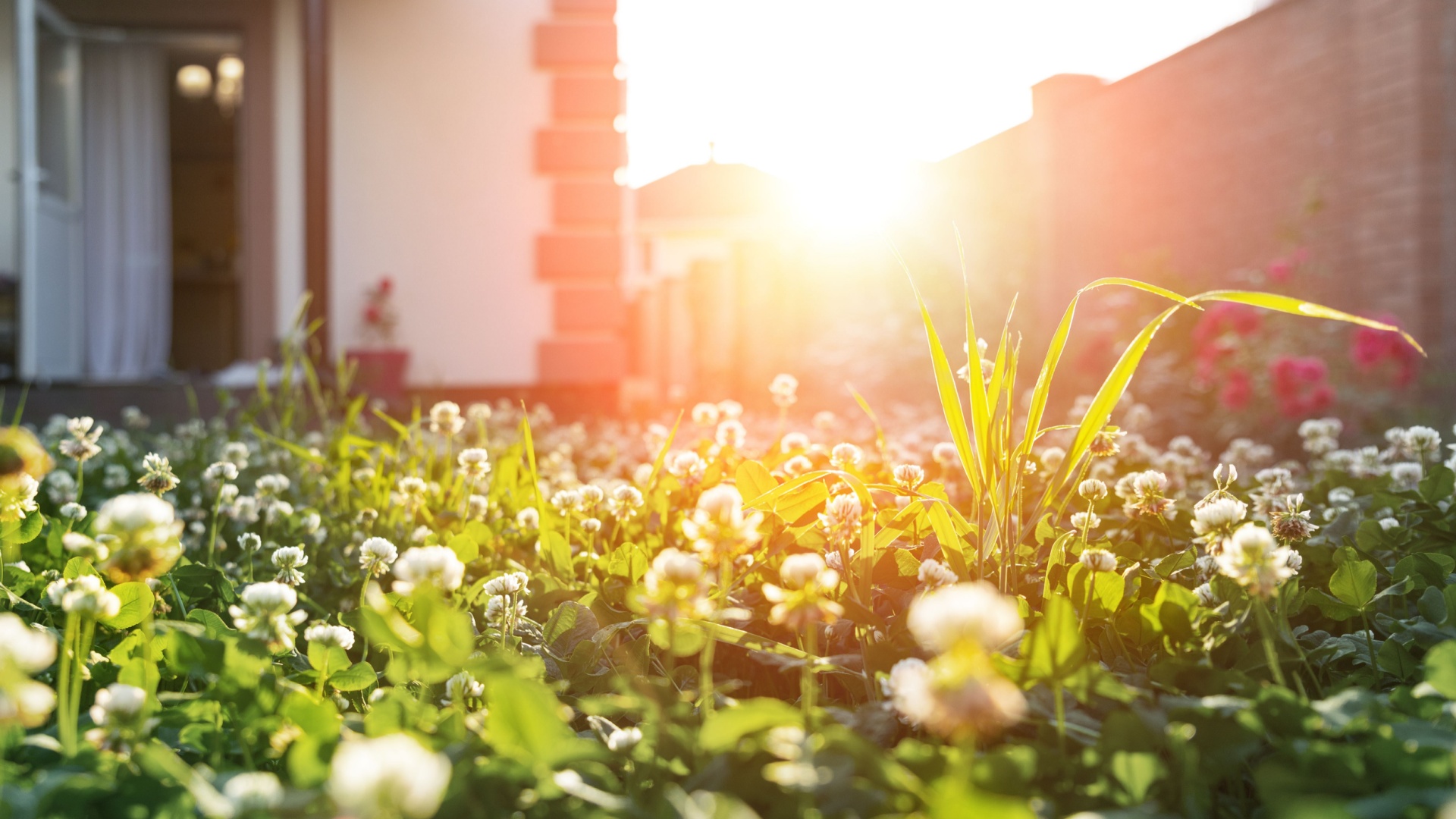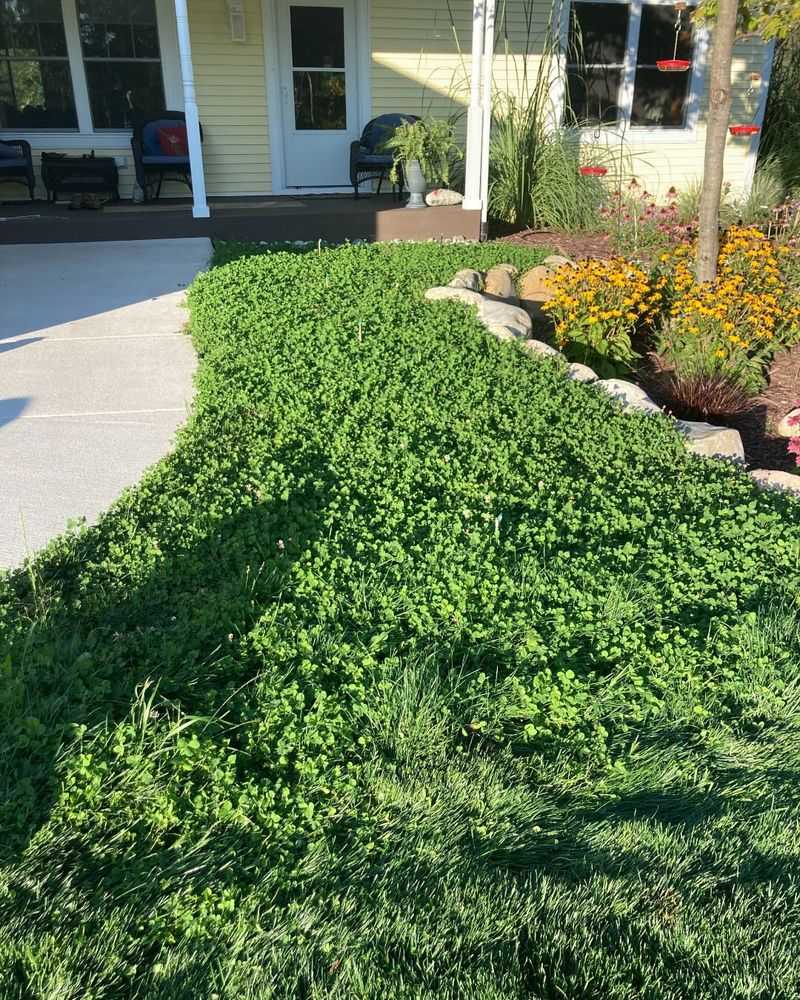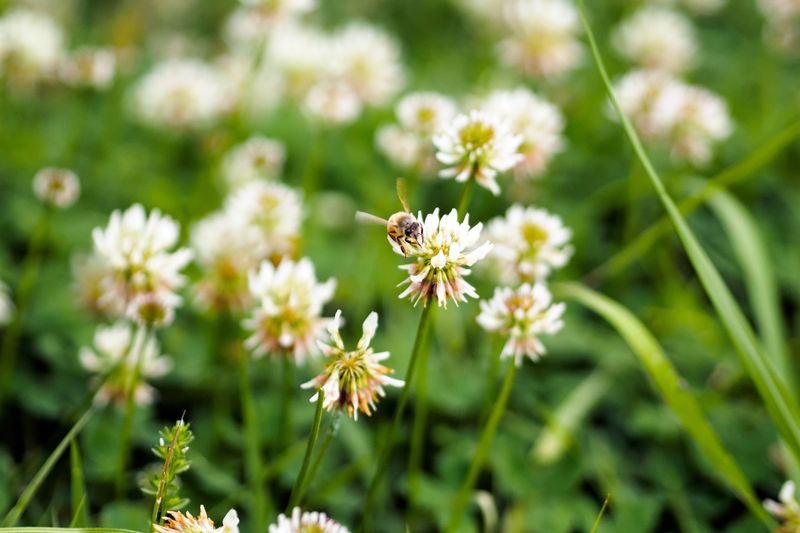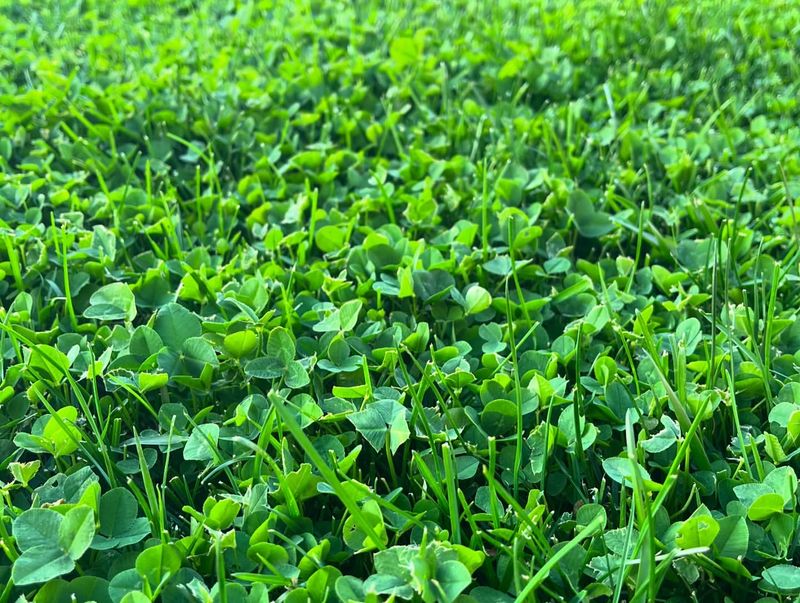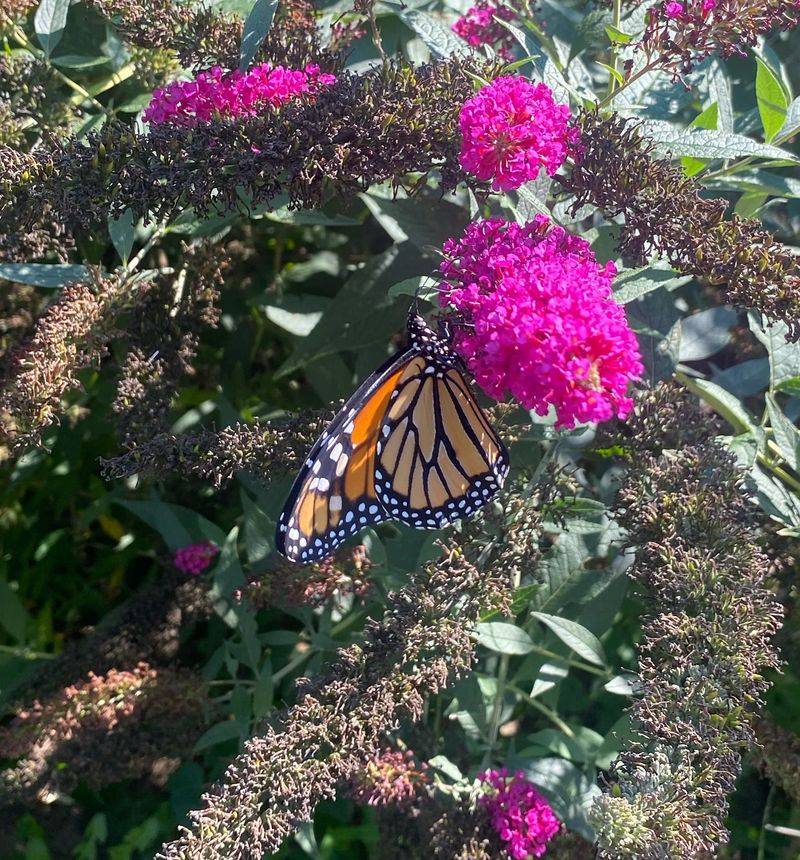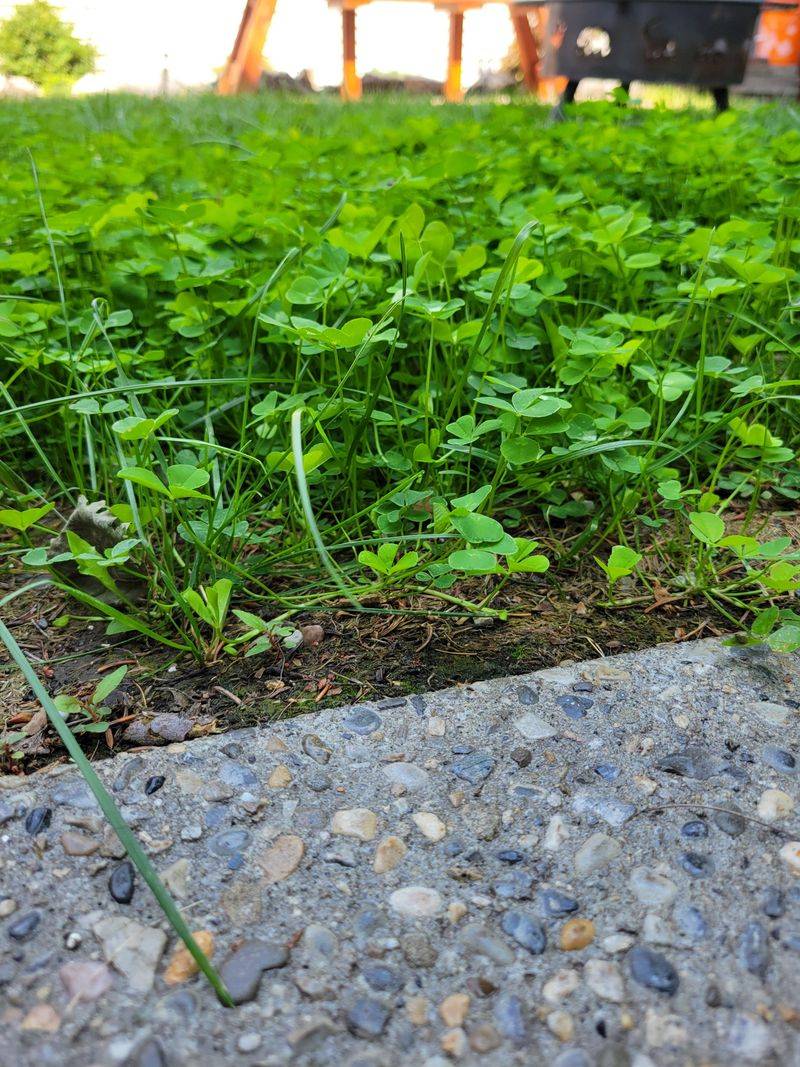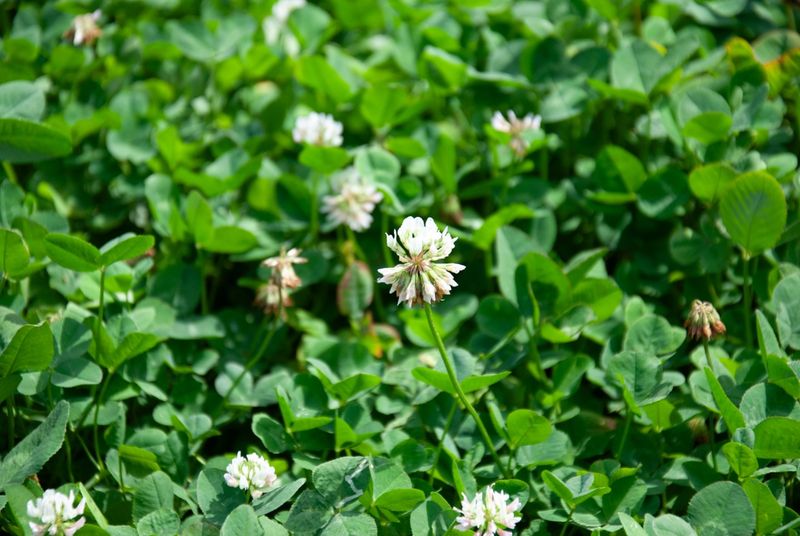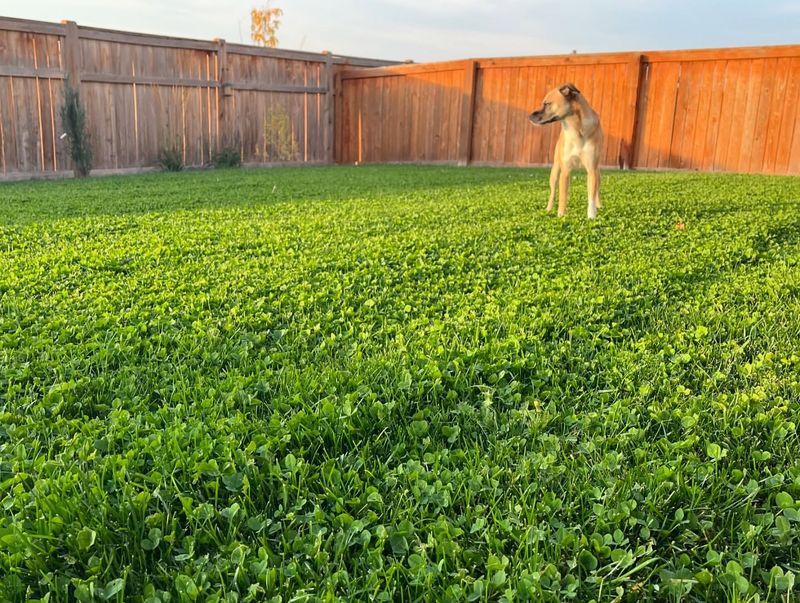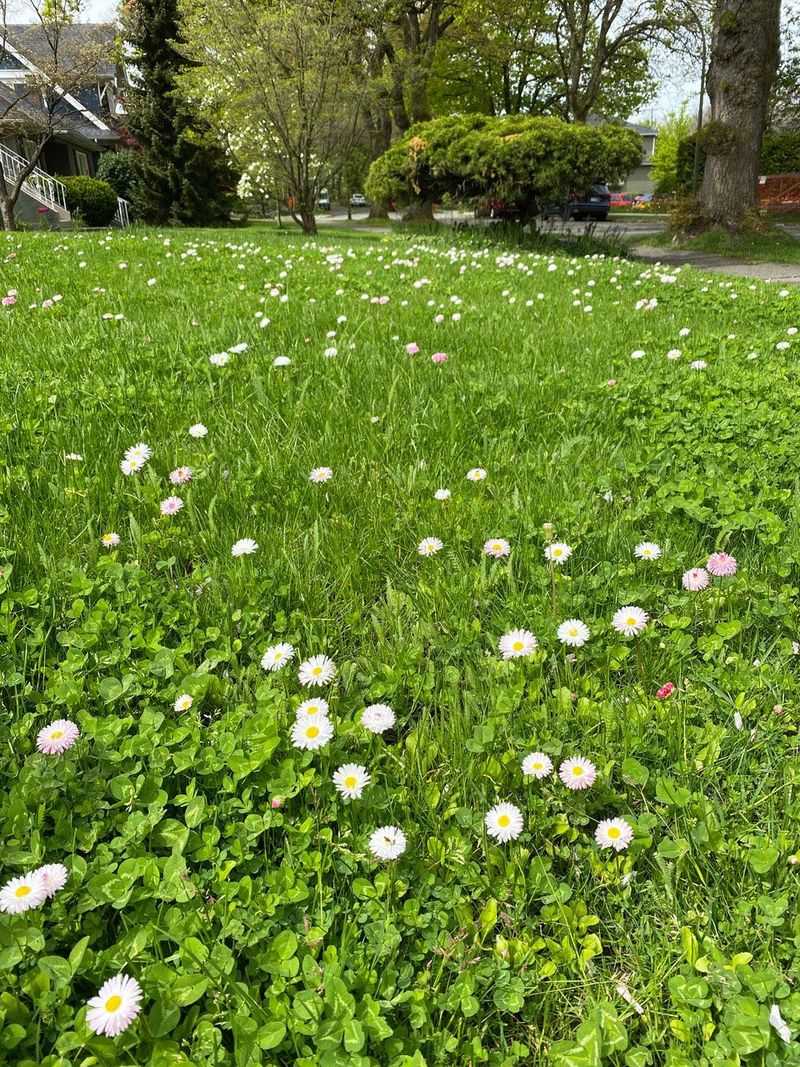Across Chicago, a green revolution is taking root as residents trade traditional grass lawns for clover. This shift isn’t just about standing out from the neighbors – it’s about creating vital habitats for bees, butterflies, and other pollinators that help our local ecosystem thrive.
The movement reflects growing awareness about how our yard choices directly impact urban wildlife and sustainability.
1. Drought-Resistant Ground Cover Saves Water
Chicago summers can be brutally hot, leaving homeowners constantly watering their grass to prevent brown patches. Clover naturally stays green with minimal watering thanks to deep roots that access underground moisture.
Many residents report cutting their summer water bills by half after switching to clover. The plant’s natural resilience means it bounces back quickly even after dry spells, maintaining that lush green look without the constant sprinkler attention.
2. Bees Flock To Tiny Blooms
The small white flowers that pop up throughout clover lawns are bee magnets! Unlike regular grass that offers nothing for pollinators, clover provides an abundant food source that keeps these important insects coming back.
Local beekeepers have noticed stronger hives in neighborhoods with more clover yards. When bees thrive, they pollinate vegetable gardens and flowering plants throughout the entire neighborhood, creating a ripple effect of benefits beyond just the clover lawn itself.
3. No More Chemical Fertilizers Needed
Clover performs a magical trick that grass can’t – it pulls nitrogen from the air and adds it to the soil. This natural fertilizing ability means Chicago homeowners can stop buying and applying chemical treatments.
Kids and pets can play safely on clover lawns without exposure to harsh chemicals. The neighborhood waterways benefit too, as rainwater runoff from clover yards doesn’t carry fertilizer pollutants into Chicago’s storm drains and eventually Lake Michigan.
4. Butterflies Find Urban Sanctuary
Monarch butterflies face serious habitat loss throughout their migration routes. Chicago residents with clover lawns create stepping-stone sanctuaries for these magnificent orange travelers as they journey through the city.
The nectar-rich clover flowers provide essential fuel for butterfly journeys. Many Chicago clover enthusiasts report seeing increased butterfly activity, bringing splashes of color and movement to urban spaces that were previously just stretches of plain grass.
5. Mowing Time Gets Cut in Half
Weekend warriors rejoice! Clover naturally grows to a perfect height of about 2-4 inches and then mostly stops. This means Chicago homeowners spend far less time pushing mowers around during precious summer weekends.
The reduced mowing schedule also means less noise pollution in neighborhoods. Gas-powered mowers create significant emissions, so cutting mowing frequency helps reduce each household’s carbon footprint while giving residents more time to enjoy Chicago’s beautiful summer months.
6. Native Pollinators Return to Urban Areas
Beyond honeybees, Chicago’s native bee species have found renewed hope in clover-filled yards. Mason bees, bumblebees, and other specialized pollinators that once disappeared from urban areas are making comebacks where clover lawns exist.
These native pollinators evolved alongside local plant species for thousands of years. When enough neighbors convert to clover, entire blocks can become pollinator highways, allowing these essential insects to establish sustainable populations throughout Chicago’s urban landscape.
7. Lawn Stays Green During Drought Restrictions
Remember those water restriction summers? While grass lawns turned crispy brown under Chicago’s watering bans, clover lawns remained lush and green without breaking the rules.
The plant’s efficient water usage means it thrives despite limited irrigation. Chicago’s increasingly hot summers with unpredictable rainfall patterns make clover an adaptive choice for climate-conscious residents who want to maintain green space while respecting water conservation needs.
8. Community Movement Creates Pollinator Corridors
What started as individual yard choices has blossomed into neighborhood-wide initiatives across Chicago. When multiple homes on a block switch to clover, they create connected pollinator pathways through urban areas.
Community garden groups have embraced clover as common areas between vegetable plots. Some Chicago neighborhoods even host “clover conversion weekends” where residents help each other tear out grass and plant clover seeds, building community connections while supporting biodiversity right where they live.

